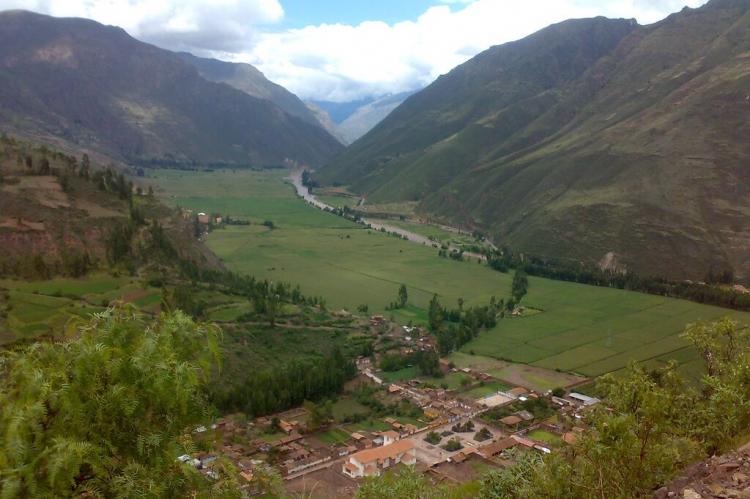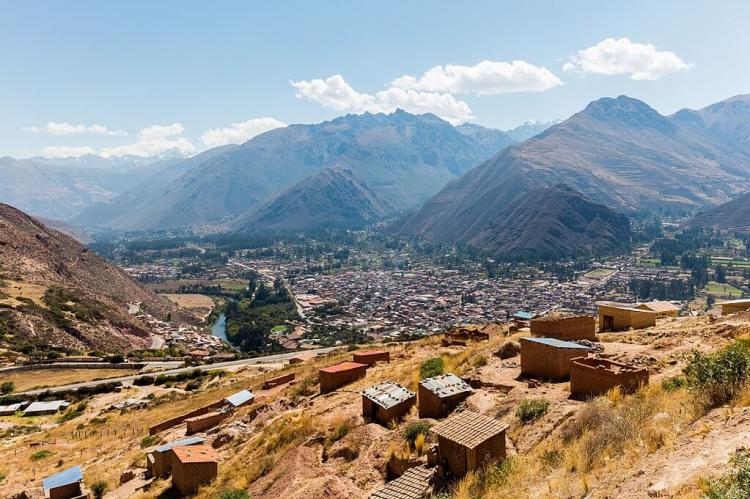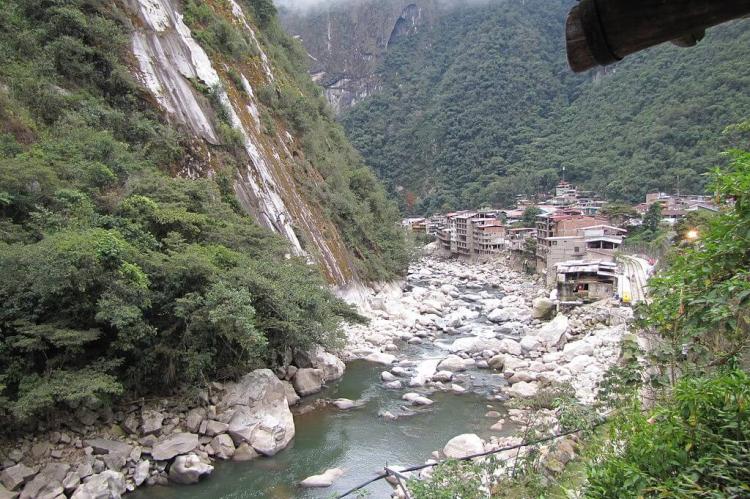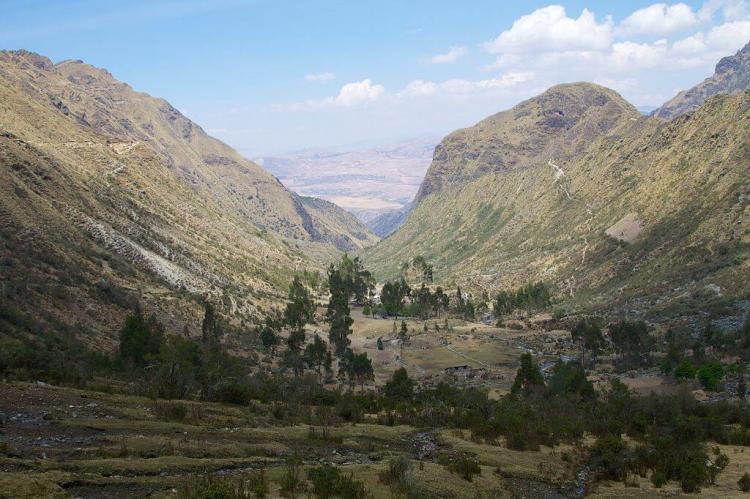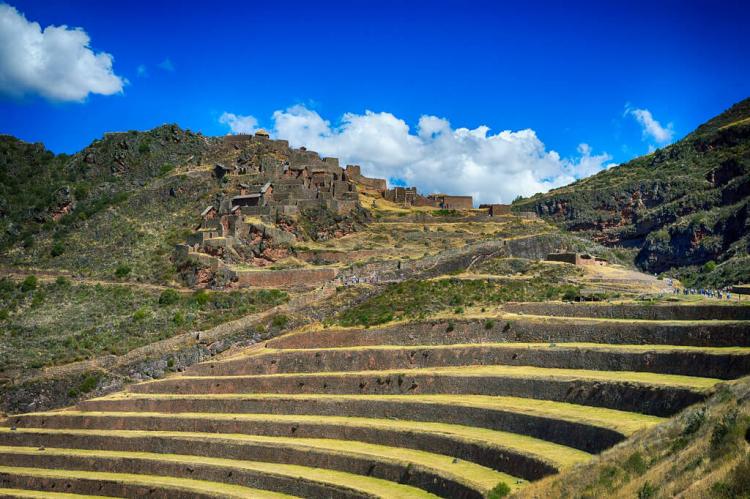Unveiling the Majesty of the Urubamba Valley: A Journey Through the Sacred Valley of the Incas
Nestled within the rugged embrace of the Peruvian Andes lies the Urubamba Valley, also known as the Sacred Valley of the Incas. This enchanting landscape, etched with the passage of the Urubamba River, is a testament to the enduring legacy of ancient civilizations that once flourished here.
Unveiling the Majesty of the Urubamba Valley: A Journey Through the Sacred Valley of the Incas
Nestled within the rugged embrace of the Peruvian Andes lies a realm of captivating beauty and profound historical significance—the Urubamba Valley, also known as the Sacred Valley of the Incas. This enchanting landscape, etched with the timeless passage of the Urubamba River, is a testament to the enduring legacy of ancient civilizations that once flourished amidst its verdant expanse. Carved over millennia by the relentless forces of nature, the valley's rugged contours and fertile plains form a mesmerizing collage of geographical wonders, where jagged peaks pierce the cerulean sky, and cascading waterfalls glisten in the golden sunlight.
As the region's lifeblood, the Urubamba River meanders gracefully through the valley's heart, weaving tales of ancient trade routes and cultural exchange. Its crystalline waters, born from the melting snows of towering Andean summits, nourish the fertile soil and sustain a rich ecosystem teeming with biodiversity. Along its winding course, the river whispers secrets of the past, bearing witness to the rise and fall of great empires and the enduring resilience of indigenous cultures.
But perhaps the true allure of the Urubamba Valley lies not only in its breathtaking natural beauty but also in the archaeological treasures scattered amidst its emerald hillsides and terraced slopes. Here, amidst the rugged terrain and towering cliffs, ancient civilizations carved out a thriving society, leaving a legacy of monumental architecture and spiritual reverence. From the iconic citadel of Machu Picchu to the sprawling ruins of Pisac and Ollantaytambo, each site tells a story of innovation, ingenuity, and cultural exchange—a testament to the enduring spirit of human creativity and resilience.
Geography: Nature's Masterpiece
The Urubamba Valley stretches majestically from Pisac to Ollantaytambo, tracing the sinuous path of the Urubamba River as it winds its way through the heart of the Andes—an awe-inspiring testament to nature's unparalleled artistry. Carved over millennia by the relentless forces of nature, the valley bears the indelible marks of geological upheaval and glacial erosion, sculpting a landscape of breathtaking beauty and diversity.
At its heart lies the Urubamba River, a sinuous ribbon of crystalline water that weaves through the valley floor, its serpentine course reflecting the shimmering light of the Andean sun. The river, born from the melting snows of towering peaks, serves as the valley's lifeblood, nourishing its fertile soil and sustaining a rich tapestry of flora and fauna. From its tranquil source high in the Andean altitudes, the river descends with unrestrained vigor, cascading over rocky outcrops and meandering through verdant meadows before converging with tributaries that thread through adjoining valleys and gorges.
The topography of the Urubamba Valley is a study in contrasts, characterized by towering peaks that soar majestically into the cerulean sky and fertile plains that stretch as far as the eye can see. Elevations within the valley vary dramatically, ranging from the lofty heights of Pisac at 3,000 meters to the mist-shrouded depths near the citadel of Machu Picchu at 2,050 meters above sea level. To the south, sentinel peaks such as Sahuasiray and Veronica stand as silent guardians of the valley, their snow-capped summits glistening in the golden light of dawn.
But it is not only the grandeur of the mountains that captivates the soul but also the intricate tapestry of life that thrives amidst the valley's fertile embrace. Meticulously cultivated by ancient civilizations, the valley floor extends approximately one kilometer wide, its rich alluvial soil yielding a bounty of crops that sustained generations of Andean peoples. Terraced fields rise dramatically on either side of the river, a testament to the ingenuity and resourcefulness of those who called this land home.
Archaeological Marvels
The Sacred Valley of the Incas is a veritable treasure trove of archaeological wonders, bearing witness to ancient Andean civilizations' ingenuity and cultural richness. Among the most renowned sites is Machu Picchu, the iconic Inca citadel perched atop a rugged mountain ridge. Built in the 15th century and abandoned during the Spanish conquest, Machu Picchu remains an enigmatic symbol of Inca engineering and spiritual reverence.
Pisac, situated at the entrance to the Urubamba Valley, boasts a sprawling archaeological complex that includes terraced hillsides, ceremonial plazas, and intricate stone structures. The ruins are divided into four distinct groups—P'isaqa, Inti Watana, Qalla Q'asa, and Kinchiraqay—each offering glimpses into the daily life and spiritual practices of the ancient Incas.
Chinchero, with its rustic charm and rich historical heritage, beckons visitors to explore its cobblestone streets and ancient ruins. Here, the remnants of an Inca palace stand in juxtaposition to a Spanish colonial church, bearing testimony to the cultural confluence that shaped the Andean landscape.
Choquequilla, also known as Ñaupa Iglesia, enchants visitors with its mystical allure—a sacred huaca shrine nestled within a cavernous sanctuary. Believed to be of Inca origin, this sacred site resonates with spiritual significance and archaeological intrigue.
Maras, famed for its intricate salt evaporation ponds, offers a glimpse into the ancient Incas' economic prowess. For centuries, these terraced pools have served as a vital source of salt, harvested through traditional methods passed down through generations.
Moray, with its enigmatic circular terraces, is a testament to Inca agricultural innovation. These concentric depressions, nestled amidst the high-altitude plateau, create microclimates ideal for experimental crop cultivation—a testament to the ingenuity and resourcefulness of ancient Andean societies.
Ollantaytambo, the crowning jewel of the Sacred Valley, is a testament to the Inca Empire's architectural prowess and strategic vision. This ancient town, once Emperor Pachacuti's royal estate, boasts a magnificent ceremonial center, imposing terraces, and intricate stone carvings that whisper tales of a bygone era.
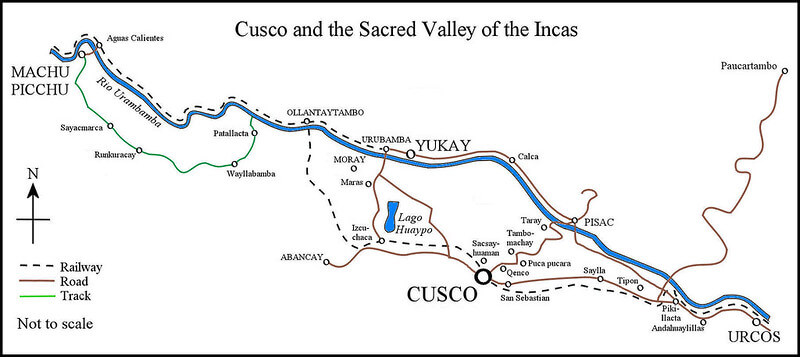
Map depicting the Sacred Valley in Peru.
Relation to Cusco: The Cultural Nexus of the Andes
Geographically and historically intertwined with the Urubamba Valley is the city of Cusco, the historic capital of the Inca Empire. Located approximately 20 kilometers (12 miles) south of the valley, Cusco is a gateway to this sacred landscape, offering visitors a tantalizing glimpse into the region's rich cultural and historical heritage.
Perched atop the Andean plateau, Cusco overlooks the majestic expanse of the Urubamba Valley, its elevated vantage point providing panoramic views of the surrounding mountains and valleys. As the cultural and political capital of the Inca Empire, Cusco wielded considerable influence over the governance and administration of the valley and its surrounding territories. From its regal palaces and grand plazas to its bustling markets and labyrinthine streets, the city served as a focal point for trade, governance, and religious ceremonies that shaped the destiny of the Andean peoples.
Today, Cusco remains a vibrant cultural nexus, attracting visitors from around the world who seek to explore its rich history and immerse themselves in the traditions of the Andean people. Its colonial-era architecture, bustling markets, and lively festivals offer a compelling juxtaposition of ancient heritage and modern-day dynamism—a testament to the enduring legacy of the Urubamba Valley and its profound influence on the cultural tapestry of Peru.
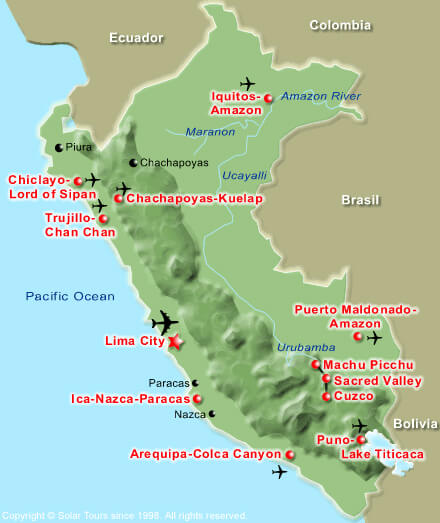
Map of Peru showing the location of the Sacred Valley.
